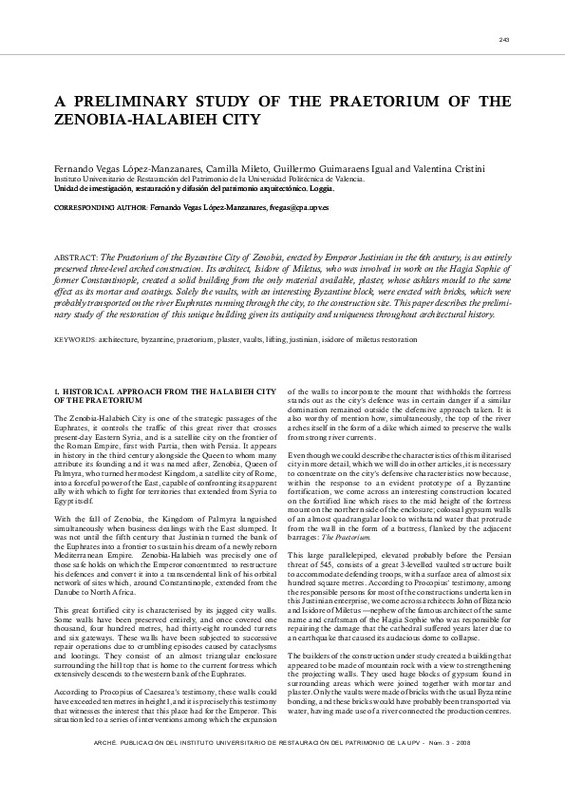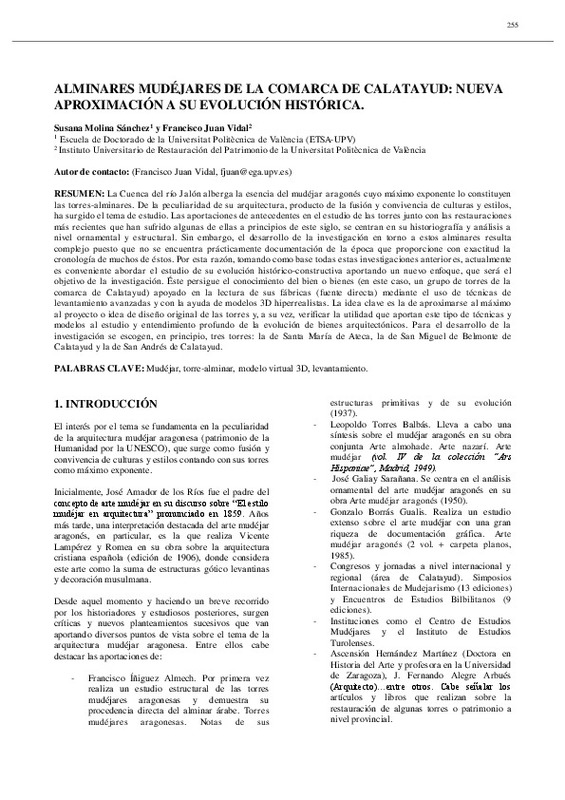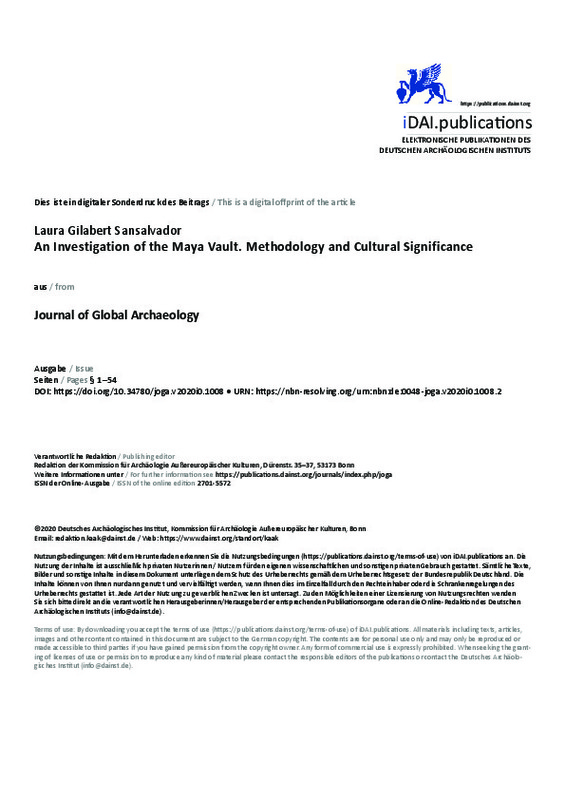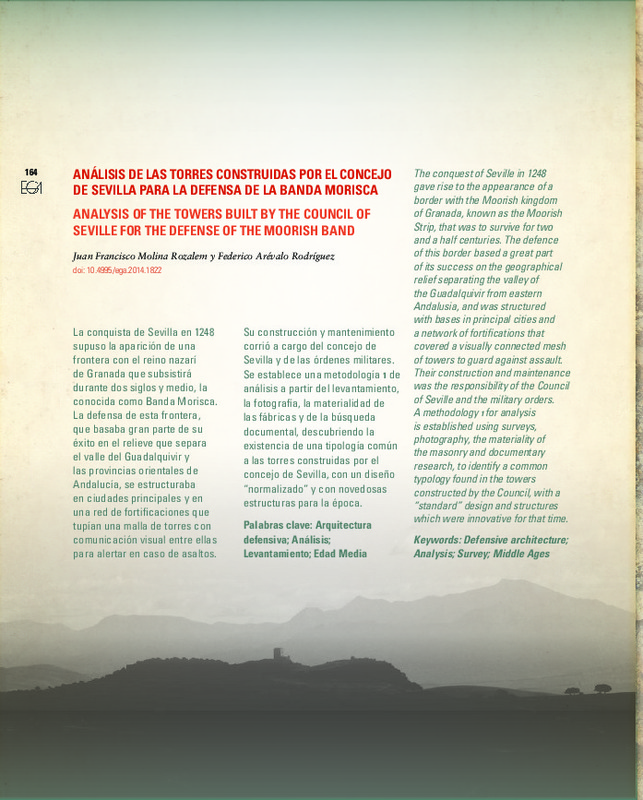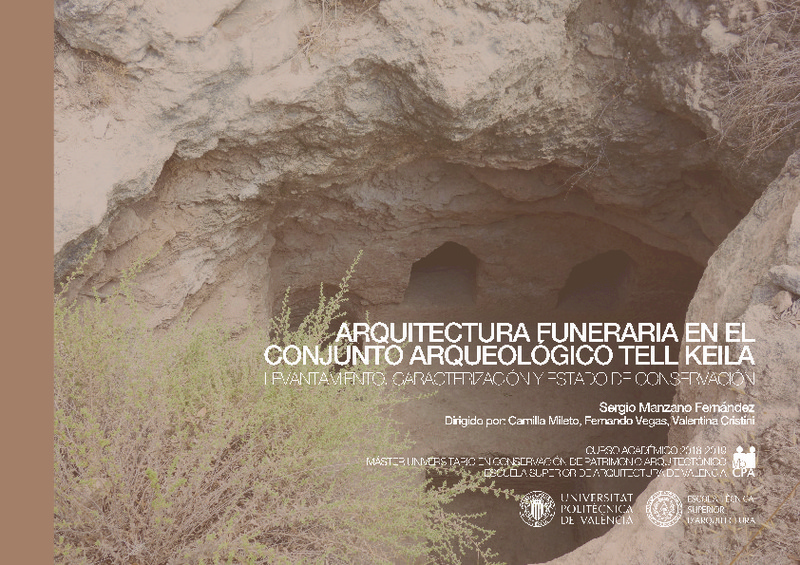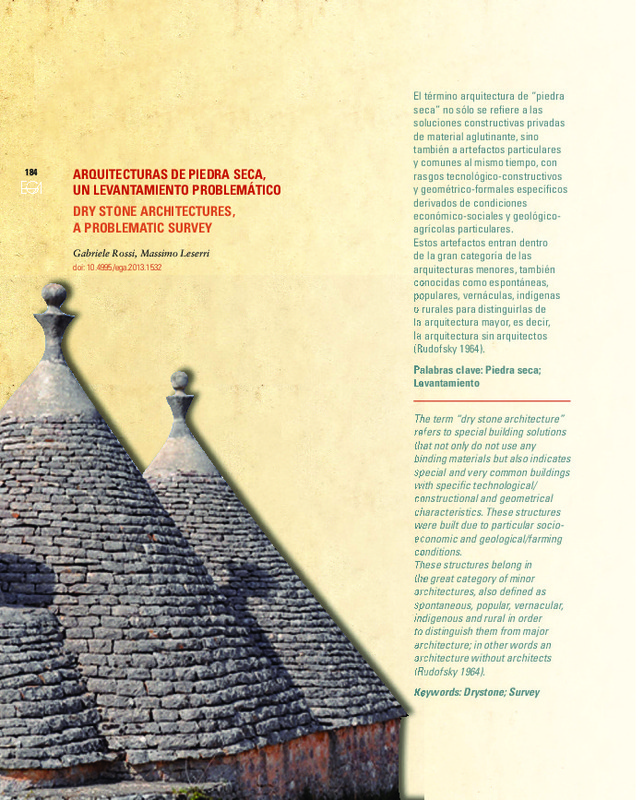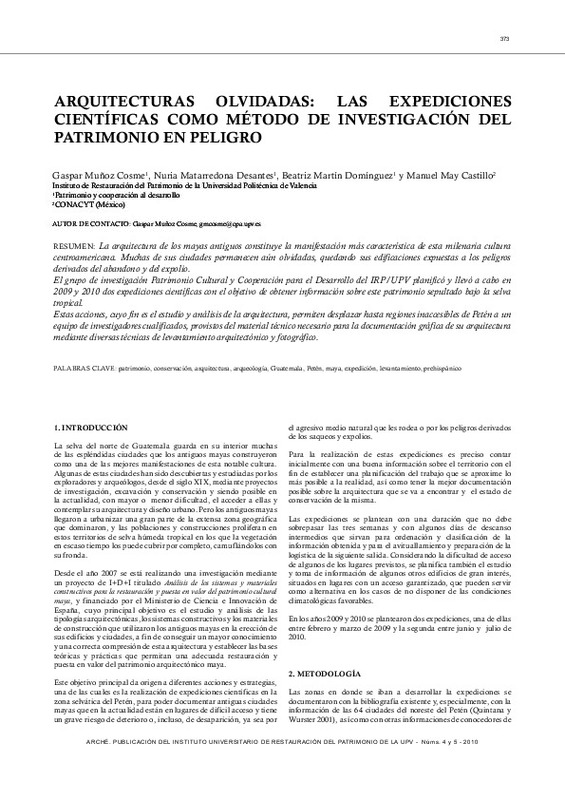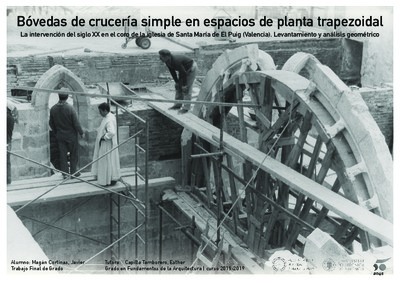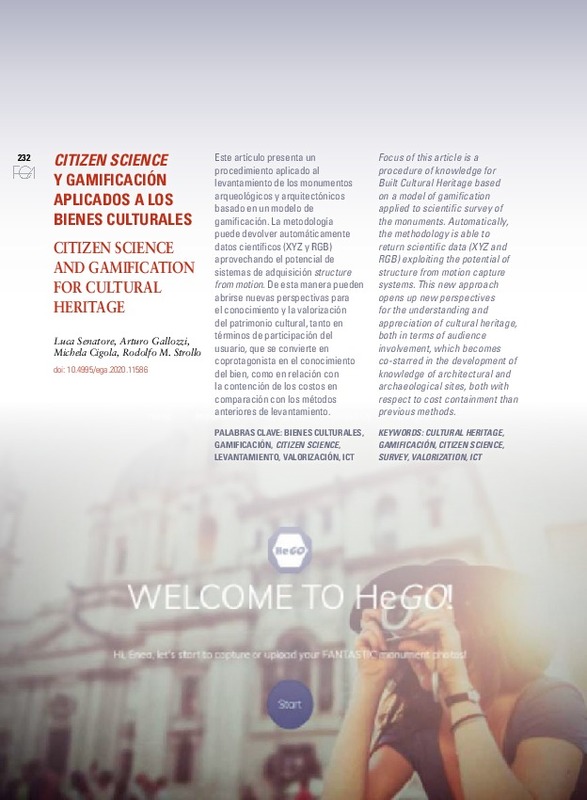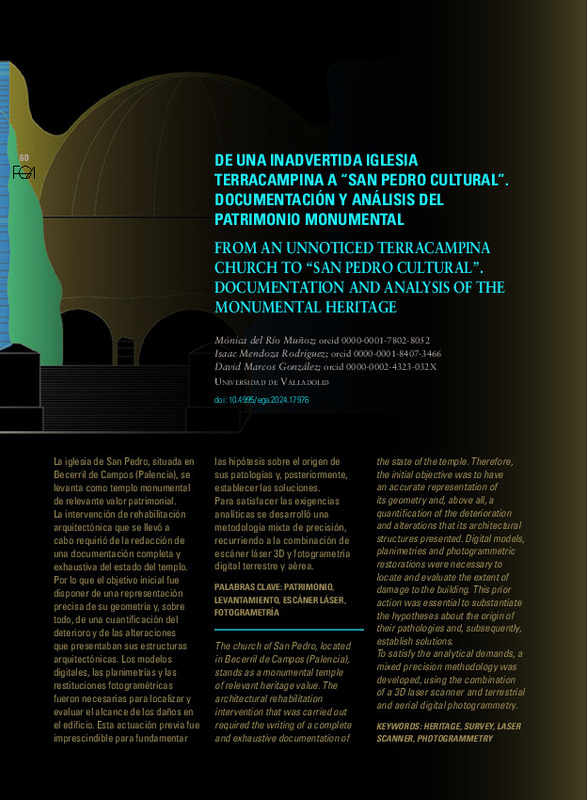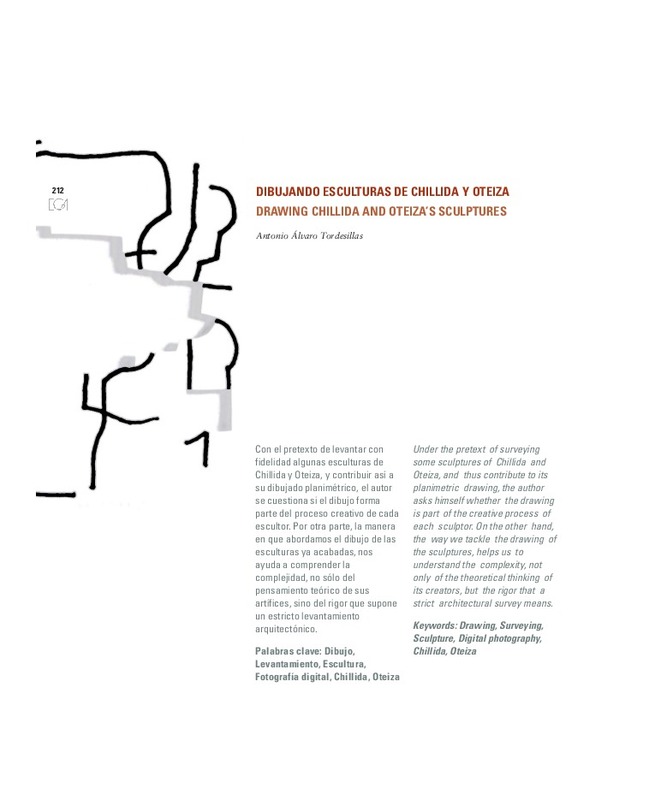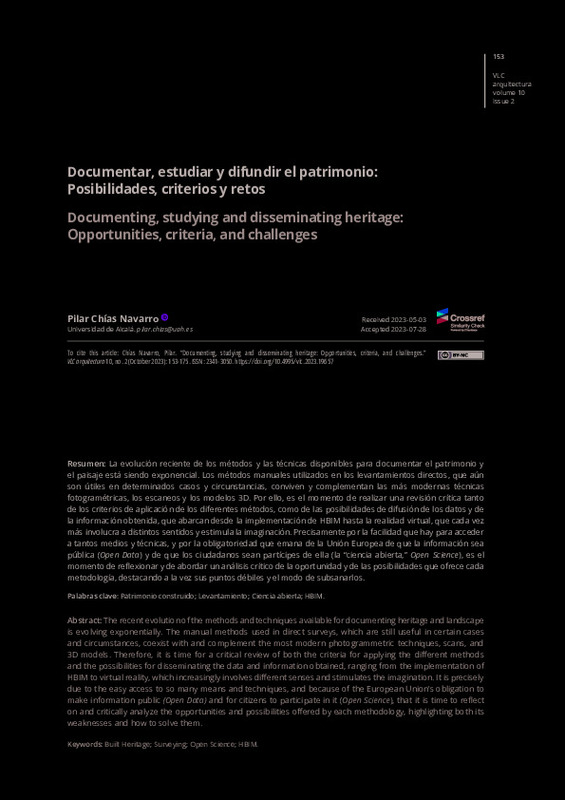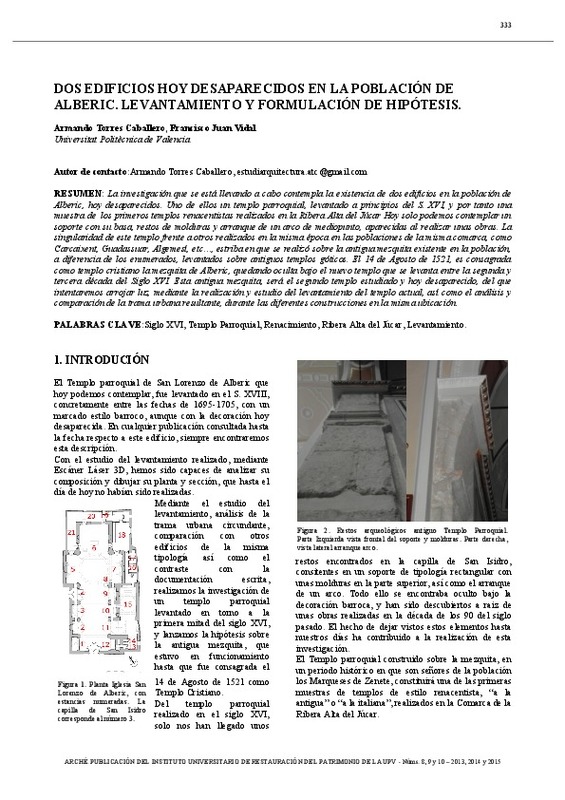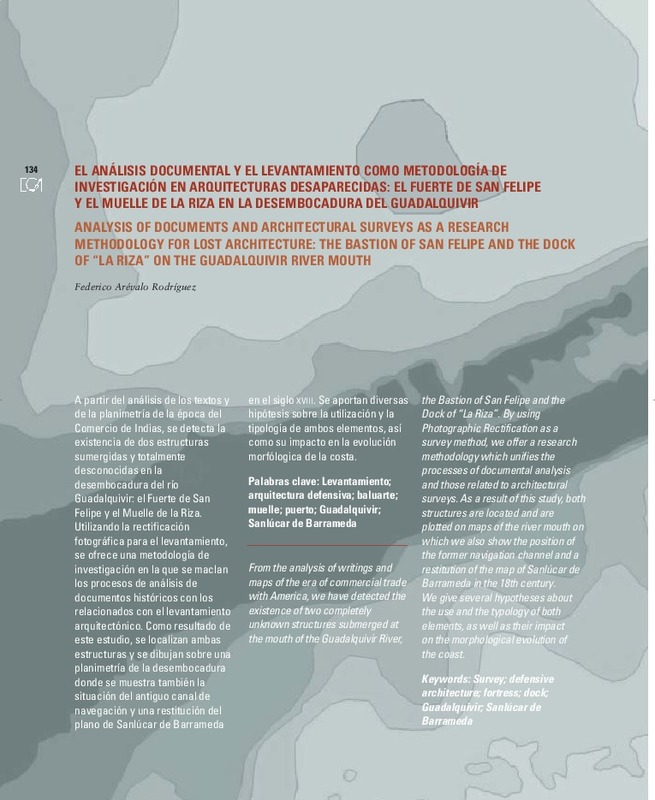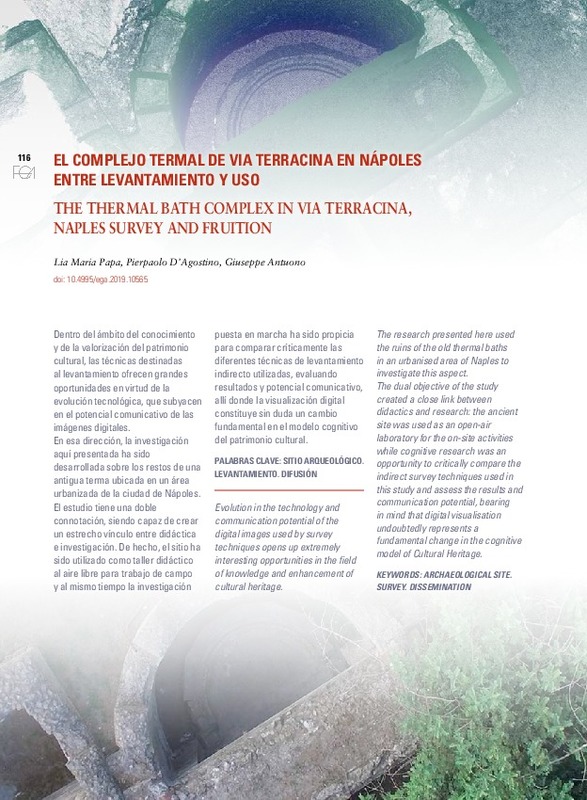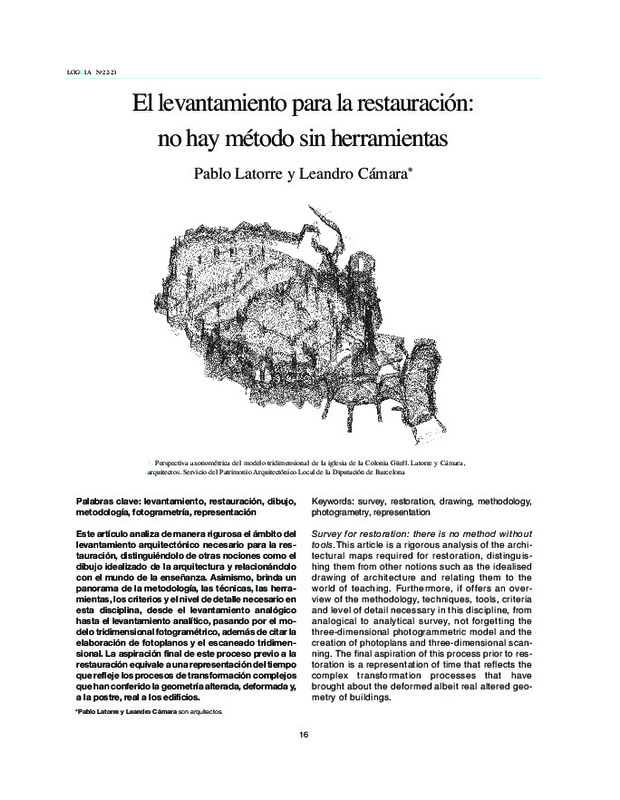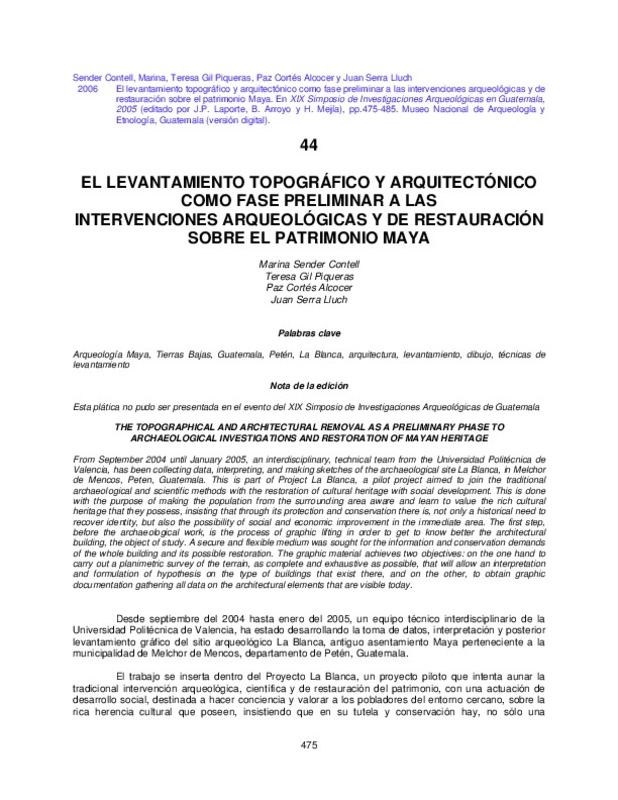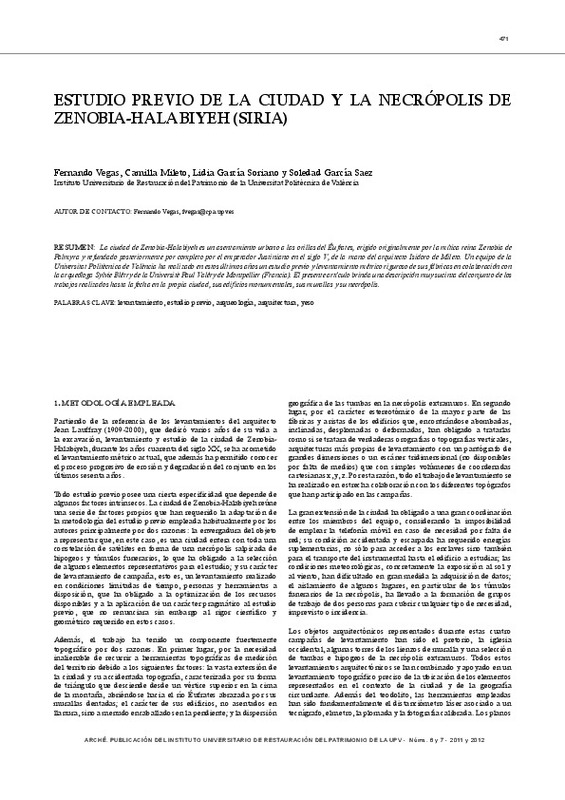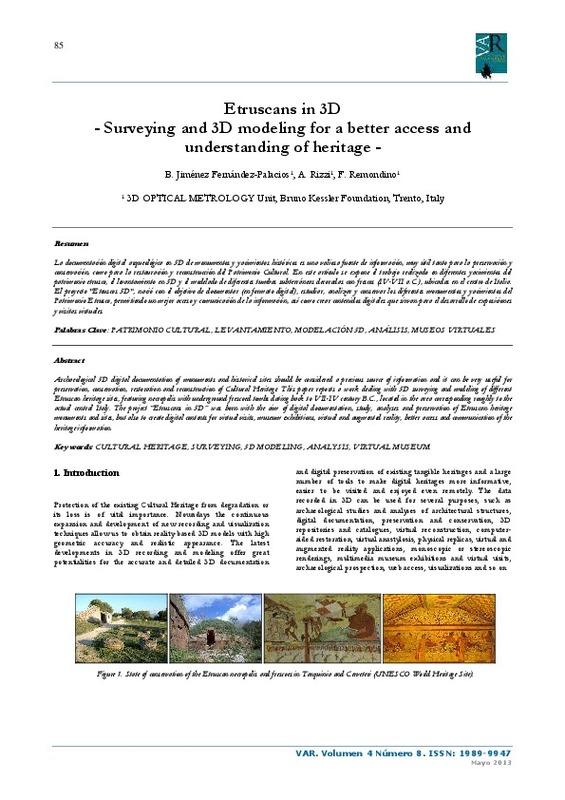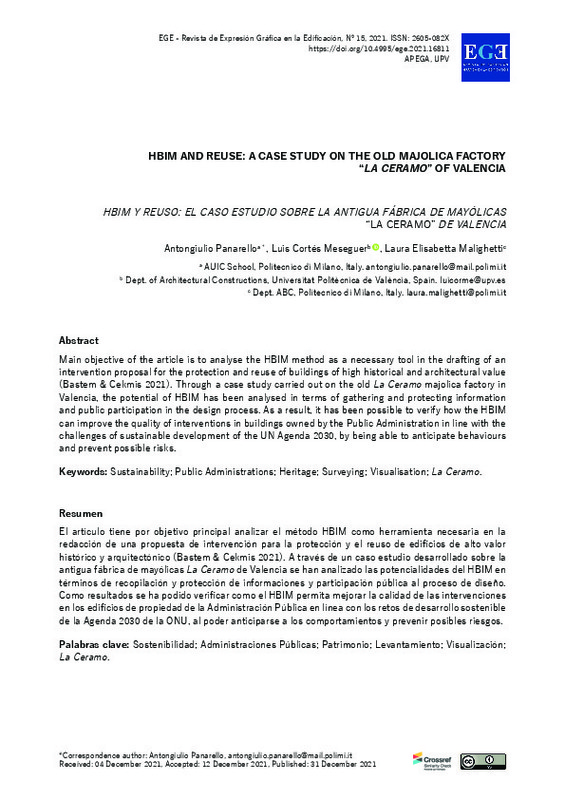

Listar por palabra clave "Levantamiento"
RiuNet: Repositorio Institucional de la Universidad Politécnica de Valencia
- RiuNet repositorio UPV
- :
- Listar por palabra clave
JavaScript is disabled for your browser. Some features of this site may not work without it.
Buscar en RiuNet
Listar
Mi cuenta
Ayuda RiuNet
Admin. UPV
Listar por palabra clave "Levantamiento"
Mostrando ítems 1-20 de 41
-
Vegas López-Manzanares, Fernando; Mileto, Camilla; Guimaraens Igual, Guillermo; Cristini, Valentina (Instituto Universitario de Restauración del Patrimonio de la UPV, 2008)The Praetorium of the Byzantine City of Zenobia, erected by Emperor Justinian in the 6th century, is an entirely preserved three-level arched construction. Its architect, Isidore of Miletus, who was involved in work on the ...
-
Molina Sánchez, Susana; Juan Vidal, Francisco (Instituto Universitario de Restauración del Patrimonio de la UPV, 2017)La Cuenca del río Jalón alberga la esencia del mudéjar aragonés cuyo máximo exponente lo constituyen las torres-alminares. De la peculiaridad de su arquitectura, producto de la fusión y convivencia de culturas y estilos, ...
-
GILABERT SANSALVADOR, LAURA (Deutsches Archäologisches Institut, 2020-10-05)[ES] Este trabajo presenta la metodología empleada y los principales resultados obtenidos en una investigación realizada recientemente sobre la bóveda en la arquitectura maya. Para abordar esta investigación se registró ...
-
Molina Rozalem, Juan Francisco; Arévalo Rodríguez, Federico (Universitat Politècnica de València, 2014-09-16)[EN] The conquest of Seville in 1248 gave rise to the appearance of a border with the Moorish kingdom of Granada, known as the Moorish Strip, that was to survive for two and a half centuries. The defence of this border ...
-
Manzano Fernández, Sergio (Universitat Politècnica de València, 2019-09-25)[ES] La arquitectura funeraria de Tell Keila, mayoritariamente datada en la segunda Edad de Hierro, supone un eje primordial para la compresión del lugar, pues revela milenios de ocupación y supone un acercamiento a ...
-
Rossi, Gabriele; Leserri, Massimo (Universitat Politècnica de València, 2013-11-06)[EN] The term “dry stone architecture” refers to special building solutions that not only do not use any binding materials but also indicates special and very common buildings with specific technological/constructional and ...
-
Muñoz Cosme, Gaspar; Matarredona Desantes, Nuria; Martín Domínguez, Beatriz; May Castillo, Manuel (Instituto Universitario de Restauración del Patrimonio de la UPV, 2010)La arquitectura de los mayas antiguos constituye la manifestación más característica de esta milenaria cultura centroamericana. Muchas de sus ciudades permanecen aún olvidadas, quedando sus edificaciones expuestas a los ...
-
Magán Cortinas, Javier (Universitat Politècnica de València, 2020-01-28)[ES] La arquitectura valenciana del siglo XIII tiene, en el Real Monasterio de Santa María del Puig, una de las construcciones más icónicas en la reconquista de Jaume I. En conmemoración de la batalla del Puig, en 1238, ...
-
Senatore, Luca; Gallozzi, Arturo; Cigola, Michela; Strollo, Rodolfo M. (Universitat Politècnica de València, 2020-07-22)[ES] Este artículo presenta un procedimiento aplicado al levantamiento de los monumentos arqueológicos y arquitectónicos basado en un modelo de gamificación. La metodología puede devolver automáticamente datos científicos ...
-
del Río Muñoz, Mónica; Mendoza Rodríguez, Isaac; Marcos González, David (Universitat Politècnica de València, 2024-03-27)[EN] The church of San Pedro, located in Becerril de Campos (Palencia), stands as a monumental temple of relevant heritage value. The architectural rehabilitation intervention that was carried out required the writing of ...
-
Álvarado Tordesillas, Antonio (Editorial Universitat Politècnica de València, 2012-06-30)[EN] Under the pretext of surveying some sculptures of Chillida and Oteiza, and thus contribute to its planimetric drawing, the author asks himself whether the drawing is part of the creative process of each sculptor. On ...
-
Chías Navarro, Pilar (Universitat Politècnica de València, 2023-10-31)[EN] The recent evolution of the methods and techniques available for documenting heritage and landscape is evolving exponentially. The manual methods used in direct surveys, which are still useful in certain cases and ...
-
Torres Caballero, Armando; Juan Vidal, Francisco (Instituto Universitario de Restauración del Patrimonio de la UPV, 2015)La investigación que se está llevando a cabo contempla la existencia de dos edificios en la población de Alberic, hoy desaparecidos. Uno de ellos un templo parroquial, levantado a principios del S. XVI, y por tanto una ...
-
Arévalo Rodríguez, Federico (Editorial Universitat Politècnica de València, 2012)[EN] From the analysis of writings and maps of the era of commercial trade with America, we have detected the existence of two completely unknown structures submerged at the mouth of the Guadalquivir River, the Bastion of ...
-
Papa, Lia Maria; D'Agostino, Pierpaolo; Antuono, Giuseppe (Universitat Politècnica de València, 2019-07-22)[EN] Evolution in the technology and communication potential of the digital images used by survey techniques opens up extremely interesting opportunities in the field of knowledge and enhancement of cultural heritage. The ...
-
Latorre, Pablo; Cámara, Leandro (Universitat Politècnica de València, 2010-12-29)[EN] This article is a rigorous analysis of the architectural maps required for restoration, distinguishing them from other notions such as the idealized drawing of architecture and relating them to the world of teaching. ...
-
Sender Contell, Marina; Gil Piqueras, María Teresa; Cortés Alcober, María Paz; Serra Lluch, Juan de Ribera (J.P. Laporte, B. Arroyo y H. Mejía, 2006)From September 2004 until January 2005, an interdisciplinary, technical team from the Universidad Politécnica de Valencia, has been collecting data, interpreting, and making sketches of the archaeological site La Blanca, ...
-
Vegas López-Manzanares, Fernando; Mileto, Camilla; García Soriano, Lidia; Garcia Saez, Soledad (Instituto Universitario de Restauración del Patrimonio de la UPV, 2011)La ciudad de Zenobia-Halabiyeh es un asentamiento urbano a las orillas del Éufrates, erigido originalmente por la mítica reina Zenobia de Palmyra y refundado posteriormente por completo por el emperador Justiniano en el ...
-
Jiménez Fernández-Palacios, Belén; Rizzi, A.; Remondino, Fabio (Universitat Politècnica de València, 2015-05-20)[EN] Archaeological 3D digital documentation of monuments and historical sites should be considered a precious source of information and it can be very useful for preservation, conservation, restoration and reconstruction ...
-
Panarello, Antongiulio; Cortés Meseguer, Luis; Malighetti, Laura Elisabetta (Universitat Politècnica de València, 2021-12-28)[EN] Main objective of the article is to analyse the HBIM method as a necessary tool in the drafting of an intervention proposal for the protection and reuse of buildings of high historical and architectural value (Bastem ...
Mostrando ítems 1-20 de 41

Universitat Politècnica de València. Unidad de Documentación Científica de la Biblioteca (+34) 96 387 70 85 · RiuNet@bib.upv.es


